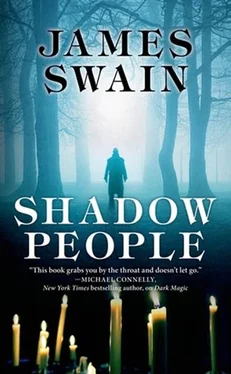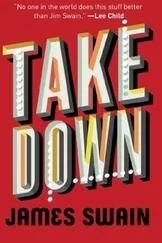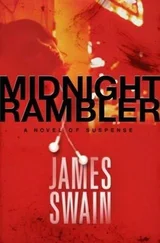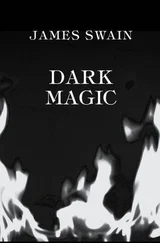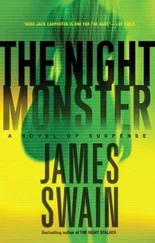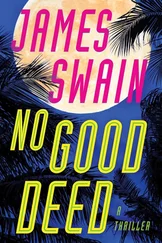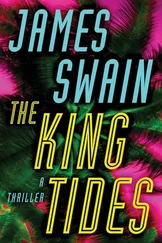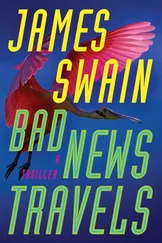He took a deep breath. “I don’t know.”
The toothpick did another slow twirl. Going to the next cubicle, Dag grabbed a manila folder off the top of a pile, and dropped it in Peter’s lap upon his return.
“That’s them,” Dag said.
“You mean the victims?”
“That’s right. The photos aren’t pretty.”
The file felt heavy. “How many unsolved cases were there that night?”
“Six.”
Peter thought he was going to be sick. Possessed little boy runs amok in city, killing six innocent people. It sounded like the plot to a low-budget horror film.
“Not that any of them were going to be missed,” Dag went on. “Whoever took those guys out was doing the good citizens of New York a favor, and deserves a medal.”
“You’re starting to sound like a vigilante, Dag,” Schoch said.
“Just speaking my mind,” her partner said.
“Were the victims bad people?” Peter asked.
“Scum of the earth,” Dag said. “I say good riddance.”
Peter went through the file. It contained six Homicide reports that had been written back in the day when cops used typewriters. Each report had its own collection of gruesome crime-scene photographs. Each victim had died in a pool of his own blood. He thought back to the snapshot of him in his Batman pajamas. The front of his pj’s had been blood soaked. No doubt the shedding of blood was something the demon found appealing.
An approximate time of death was printed on each report. All the victims had died during the five hours he’d been roaming the city. All had also been found within a twenty-block radius of the Shubert Theatre in Times Square, where his parents had been abducted.
The cases had other similarities as well. Each victim had a lengthy criminal record, and was wanted by the law. One rapist, an armed robber, three men wanted for murder, and a drug dealer known for selling poisonous drugs to his clients. In keeping with the theme of his rampage, they had died brutally, with their necks broken and skulls crushed in, their bodies left in alleyways to be discovered a few hours later.
He closed the file. He was going to have to find a way to deal with this; he just didn’t know how. When he spoke, his voice sounded like a recording. “Did anyone see who did this?”
“There was one eyewitness,” Dag said. “A woman walking her dog saw our killer kneeling over one of the victims, strangling the crap out of him.”
I killed them with my bare hands, he thought. How lovely.
“Did she give you a physical description?”
“Witness said he was a little guy, if you can believe that.”
He started to tremble. For the first time, he realized what a huge risk he’d taken coming here. If he wasn’t careful, Dag and Schoch would realize that he was the little guy the eyewitness had seen, and they’d take a sample of his DNA, compare it to the victims’ samples, and then they’d have to arrest him.
Dag wore a blank look, and wasn’t making the connection. Schoch hadn’t made the connection yet, either. So far so good, but what about later on? They were smart cops, and their brains worked like filters. Eventually, it would dawn on them why Peter had come to see them.
He needed to stop that from happening, and decided to blur their memories. Magicians were masters at blurring their audiences’ memories, and he would do the same with the detectives.
He asked Dag what several notations he’d seen in the homicide reports referred to. Dag obliged him, and spent five minutes explaining the notations. When Dag was done, Peter asked Schoch to explain the coroner’s reports in the files. Schoch obliged him as well, and five more minutes were spent. Getting the detectives talking served an important purpose. Instead of asking questions, they were now having to answer questions. This made them switch gears, and use a different part of their brains.
The second thing it did was kill time. The further away they moved from the thing Peter didn’t want them to remember, the less in focus the memory became. If he killed enough time, the memory would become blurred with the things he was now asking them. Magicians called this stalling technique time delay. During a magic show, things happened onstage which the magician did not want the audience to remember. By creating a time delay, the audience often forgot the very thing which allowed the trick to work.
Peter worked his magic on the detectives. Soon they looked bored, and ready to go back to work. “Thanks for talking to me. I’ll let you know if I remember anything from that night.”
The phone on the desk lit up. Schoch snatched the receiver and waved good-bye. Dag walked him to the elevators and punched the button.
“I’ll e-mail you about those tickets,” the detective said.
“I won’t forget,” Peter promised.
* * *
Riding down in the elevator, Peter hugged himself and shut his eyes. How could he have murdered six men with his bare hands and not remember the act? It just didn’t seem possible.
Perhaps someone else was responsible, a madman maybe, or another poor soul possessed by a demon. Those were logical explanations, and he was willing to accept them, except he still couldn’t understand how he’d managed to end up with Max.
Stepping outside the 19th Precinct, he texted Liza that he’d be home in a few hours, then hailed a cab and headed downtown to the Village.
Long ago, a freight rail line had run high above the streets of Manhattan on the West Side. One day the trains had stopped running, and the elevated line had fallen into disrepair, with weeds and garbage strewing the tracks. The city had planned to tear down the constant eyesore along with all the memories.
Only this was New York, where everything old became new again. A vocal group of residents had banded together with the goal of preserving the tracks. Calling themselves Friends of the High Line, they’d begun the arduous process of convincing the city’s leaders to change their minds. In the end, they had won, and the tracks were saved.
Today, the tracks served as a pedestrian walkway that stretched from Gansevoort to 34th Street, and was filled with well-tended gardens, dozens of pieces of modern sculpture, and comfy places to curl up with a book, which many people did when the weather was pleasant.
Because this was New York, the High Line had plenty of rules. No smoking, biking, skateboarding, picking flowers, climbing, throwing objects, littering, filming movies, or blasting boom boxes were allowed. And there were no street performers of any kind.
Except for one.
One performer was allowed to hold court on the High Line and entertain the masses, and his name was Max Romeo.
Max had lived in New York most of his life, and knew everybody. He’d pulled some strings, and had gotten the city to issue him a permit to perform magic on the High Line whenever the mood suited him. In Peter’s opinion, it was the greatest gig in the city.
Tuesday afternoon, bright and sunny, Peter found his teacher near the West 20th Street entrance. Max was plucking shiny silver dollars out of a young boy’s ears and nose, the coins landing into a metal pail with a loud clunk! The appreciative crowd laughed and applauded.
“Stand up straight, my boy,” Max commanded with a playful air.
More coins appeared and were tossed in. Soon the pail grew heavy in Max’s hand. The old magician shook the coins while casting a suspicious gaze at the crowd. There was no tougher crowd than a bunch of New Yorkers. Yet Max had them in the palm of his hand.
“On the count of three, I will perform a miracle,” Max proclaimed. “Please count along. Are you ready? Here we go. One.”
Читать дальше
